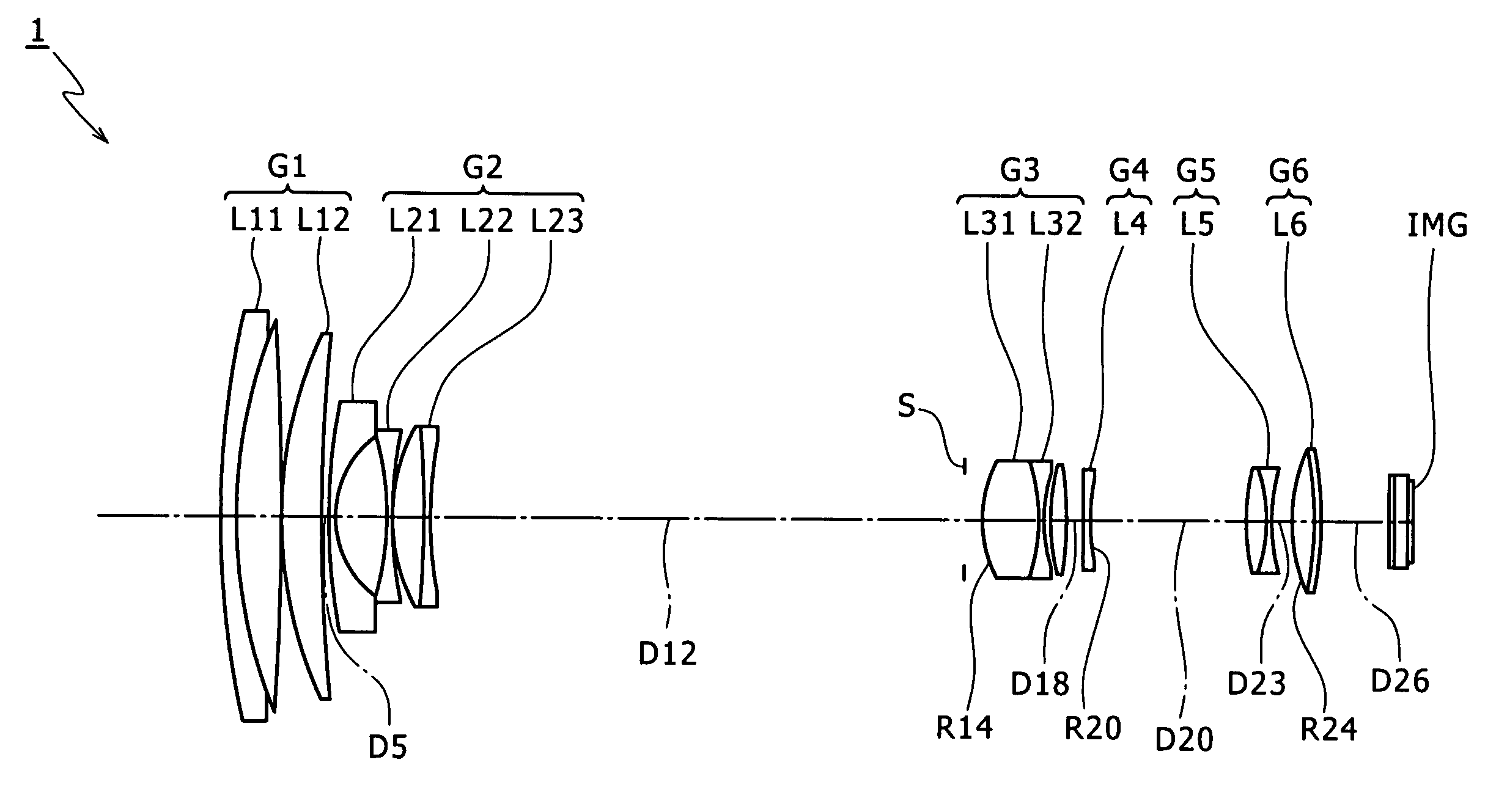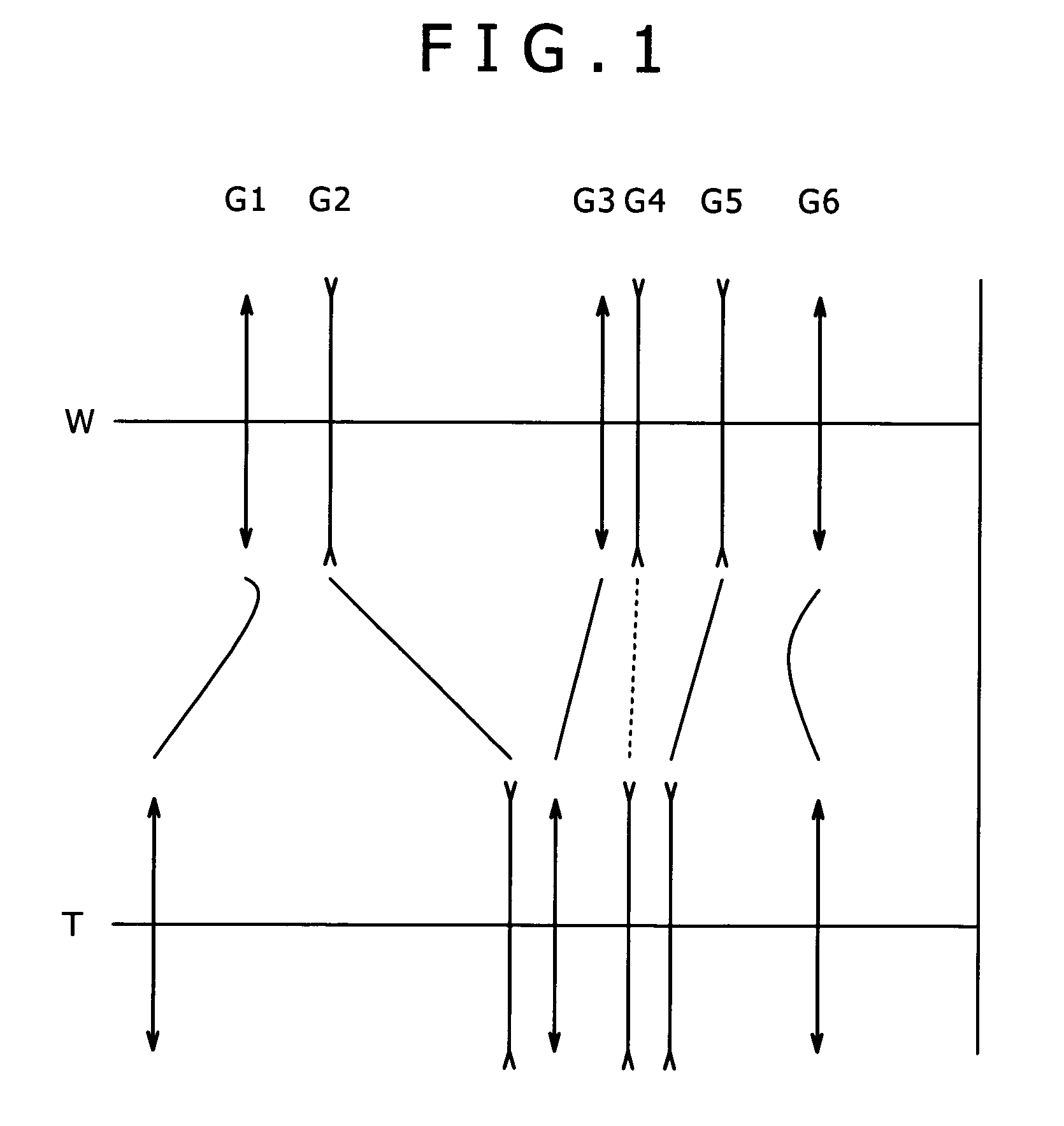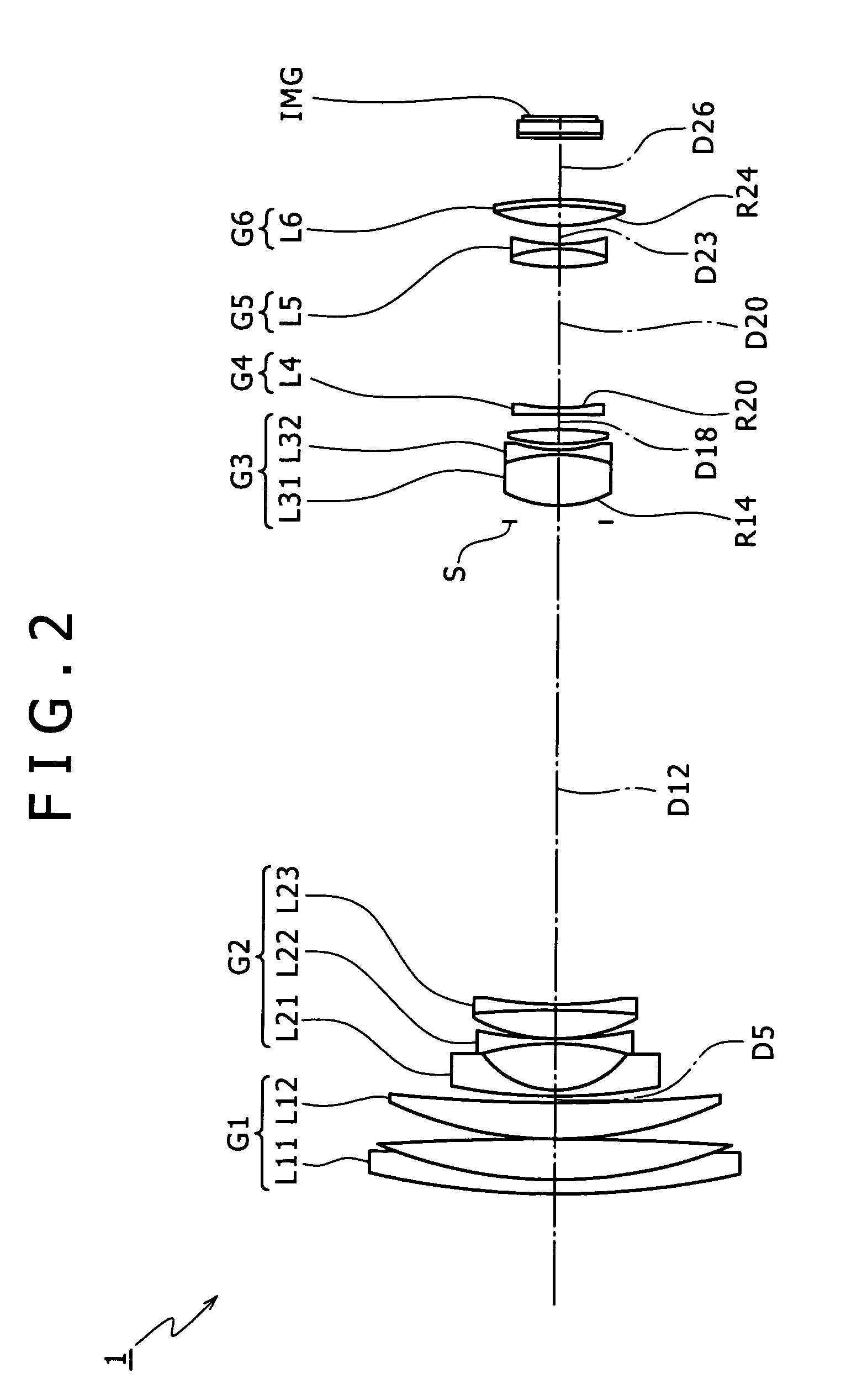Variable focal length lens system
a lens system and variable technology, applied in the field of variable focal length lens system, can solve the problems of inability inability to achieve sufficient miniaturization, failure to achieve predetermined optical performance, etc., and achieve the effect of enhancing the magnifying power
- Summary
- Abstract
- Description
- Claims
- Application Information
AI Technical Summary
Benefits of technology
Problems solved by technology
Method used
Image
Examples
first embodiment
[0170]FIG. 2 shows a lens configuration of a variable focal length lens system 1 according to the present invention. Referring to FIG. 2, the variable focal length lens system 1 includes 15 lenses.
[0171]The first lens group G1 includes a cemented lens L11 of a negative lens of a meniscus shape having a convex face directed to the object side and a positive lens having a convex face directed to the object side, and a positive lens L12 having a convex face directed to the object side.
[0172]The second lens group G2 includes a negative lens L21 of a meniscus shape having a concave face directed to the image side, a negative lens L22 of a biconcave shape, and a cemented lens L23 of a positive lens of a biconvex shape and a negative lens of a biconcave shape.
[0173]The third lens group G3 includes a cemented lens L31 of a positive lens of a biconvex shape and a negative lens of a biconcave shape, and a positive lens L32 of a biconvex shape.
[0174]The fourth lens group G4 includes a negative...
second embodiment
[0188]FIG. 7 shows a lens configuration of a variable focal length lens system 2 according to the present invention. Referring to FIG. 7, the variable focal length lens system 2 shown includes 15 lenses.
[0189]The first lens group G1 includes a cemented lens L11 of a negative lens of a meniscus shape having a convex face directed to the object side and a positive lens having a convex face directed to the object side, and a positive lens L12 having a convex face directed to the object side.
[0190]The second lens group G2 includes a negative lens L21 of a meniscus shape having a concave face directed to the image side, a negative lens L22 of a biconcave shape, and a cemented lens L23 of a positive lens of a biconvex shape and a negative lens of a biconcave shape.
[0191]The third lens group G3 includes a cemented lens L31 of a positive lens of a biconvex shape and a negative lens of a biconcave shape, and a positive lens L32 of a biconvex shape.
[0192]The fourth lens group G4 includes a ne...
third embodiment
[0205]FIG. 12 shows a lens configuration of a variable focal length lens system 3 according to the present invention. Referring to FIG. 12, the variable focal length lens system 3 shown includes 12 lenses.
[0206]The first lens group G1 includes a cemented lens L11 of a negative lens of a meniscus shape having a convex face directed to the object side and a positive lens having a convex face directed to the object side, and a positive lens L12 having a convex face directed to the object side.
[0207]The second lens group G2 includes a negative lens L21 of a meniscus shape having a concave face directed to the image side and a cemented lens L22 of a negative lens of a biconcave shape and a positive lens of a meniscus shape having a convex face directed to the object side.
[0208]The third lens group G3 includes a cemented lens L3 of a positive lens of a biconvex shape and a negative lens of a meniscus shape having a concave face directed to the object side.
[0209]The fourth lens group G4 in...
PUM
 Login to View More
Login to View More Abstract
Description
Claims
Application Information
 Login to View More
Login to View More - R&D
- Intellectual Property
- Life Sciences
- Materials
- Tech Scout
- Unparalleled Data Quality
- Higher Quality Content
- 60% Fewer Hallucinations
Browse by: Latest US Patents, China's latest patents, Technical Efficacy Thesaurus, Application Domain, Technology Topic, Popular Technical Reports.
© 2025 PatSnap. All rights reserved.Legal|Privacy policy|Modern Slavery Act Transparency Statement|Sitemap|About US| Contact US: help@patsnap.com



